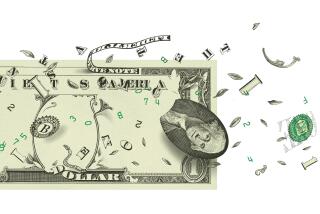Economy More ‘Pop’ Than ‘Boom’
- Share via
A local television producer called me last week about a possible interview for a show that she was preparing on “The Consumer in a Booming Economy.” She hoped to provide counsel for viewers on how to spend their extra earnings in these buoyant times.
I told her I didn’t think that the economy was booming. She seemed puzzled that I could possibly have overlooked all of the plentiful and easily available evidence. And so I was reminded once again of how skewed I find much recent reporting of the economic news.
Many in the media have echoed a common theme in recent months: The economy is soaring alongside rising stock market prices. Falling interest rates provide even rosier prospects for the coming years. One reads frequently of a spreading economic “euphoria.” The subhead for a recent New York Times economic wrap-up trumpeted, for example, that “the U.S. economy is healthier than in decades.”
I have three principal quarrels with what seems to be the prevailing roseate view.
First, many economic writers continue to equate the welfare of the affluent and wealthy with the interests of all Americans. It is certainly true that the stock market has been bullish. But relatively few Americans enjoy the fruits of those rising asset values. The wealthiest 2% of all households probably account for more than half of all personal ownership of corporate stock, and the most affluent fifth of the population controls nearly all equities held by individuals. The remaining four-fifths witness the bulls’ frenzy as outside observers.
Meanwhile, their own opportunities stagnate. While the stock market is a meaningful indicator for the wealthy, the best barometer for the bottom 80% is the index of real compensation per hour for production and non-supervisory workers in the private non-farm economy, a measure of before-tax, hourly take-home pay. While the economy was “booming” over the past three years, this index of real hourly compensation actually dropped slightly from 1983 to the last quarter of 1985. And it has declined by 6% from 1978 to the end of 1985. These are hardly developments about which working people would be inclined to wax euphoric.
Second, the recent celebrations have confused paper prosperity with real improvements in underlying economic conditions. Rising stock values can improve the liquid assets of individual wealth-holders, but they do not necessarily lead to increased production of tangible goods and services.
What is more critical for our present and future economic welfare are underlying trends in economic productivity and investment; these are the indicators that tell us how much of the paper profits are being translated into real improvements in productiveness from which all of us could potentially benefit.
And here the record is not encouraging. Even accounting for much lower rates of inflation, hourly productivity in the non-farm business sector increased by a dismal 0.8% per year between 1979 and 1985 and actually declined slightly from 1984 to 1985. Compared either to our own earlier achievements in the boom years from 1948 to 1966, when hourly productivity increased by more than 3% a year, or to the continuing achievements of our major economic competitors, whose productivity growth continues to exceed ours by substantial margins, our economy is still limping.
No Improvement in Net Investment Share
The investment picture mirrors this discouragement. One critical reflection of the stagnation of the U.S. economy during the 1970s was that we were devoting a declining portion of our total resources to productive investment in machines and equipment: The percent of gross national product devoted to net fixed (private domestic) non-residential investment--what economists call the “net investment share”--had dropped from one business-cycle peak to the next after the end of the long postwar boom. Before we celebrate a promising recovery, we should be able to report a reversal of that trend.
No such luck. While investment recovered heartily from its massive slump in 1981-82, it has not recovered enough. The net investment share has not improved, controlling for the ups and downs of the business cycle, since its last peak in 1979. The figure for 1985, indeed, was slightly below the 1979 figure. Stagnation, by this measure, persists.
This leads directly to my third dissatisfaction with recent reporting. A bullish stock market is often interpreted as a measure of rising “expectations” about the future. Recent developments may be discouraging, according to this account, but investors may project substantial improvement ahead.
This is quite possible, of course, but the investors may also be wrong. There is nothing in recent financial trends that guarantees a more buoyant future. Real interest rates fell dramatically during the 1970s, but investment stagnated alongside them. Stock prices and expectations rose continually during the 1950s, but investment and the economy dragged its feet.
Most dramatic, lest we cast aside the past altogether, paper profits soared during the late 1920s, hardly inaugurating a prosperous decade during the 1930s. We are not likely to repeat the 1930s. But history should at least discipline us to moderate our present celebrations.
More to Read
Inside the business of entertainment
The Wide Shot brings you news, analysis and insights on everything from streaming wars to production — and what it all means for the future.
You may occasionally receive promotional content from the Los Angeles Times.










